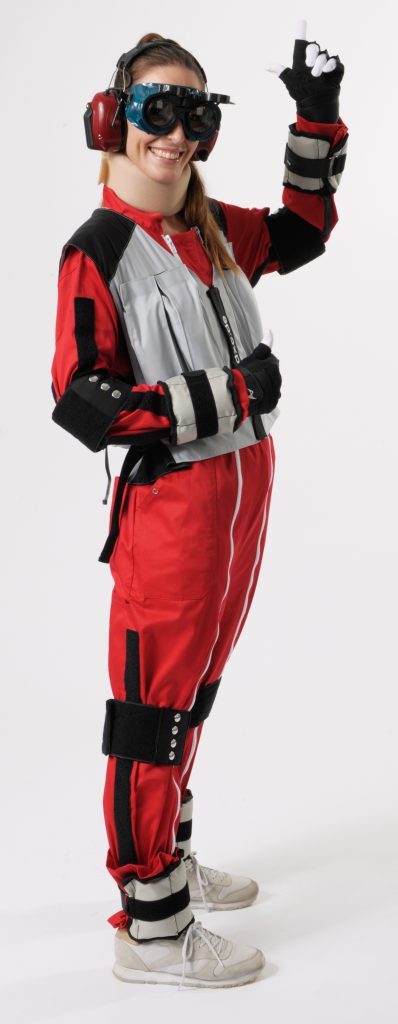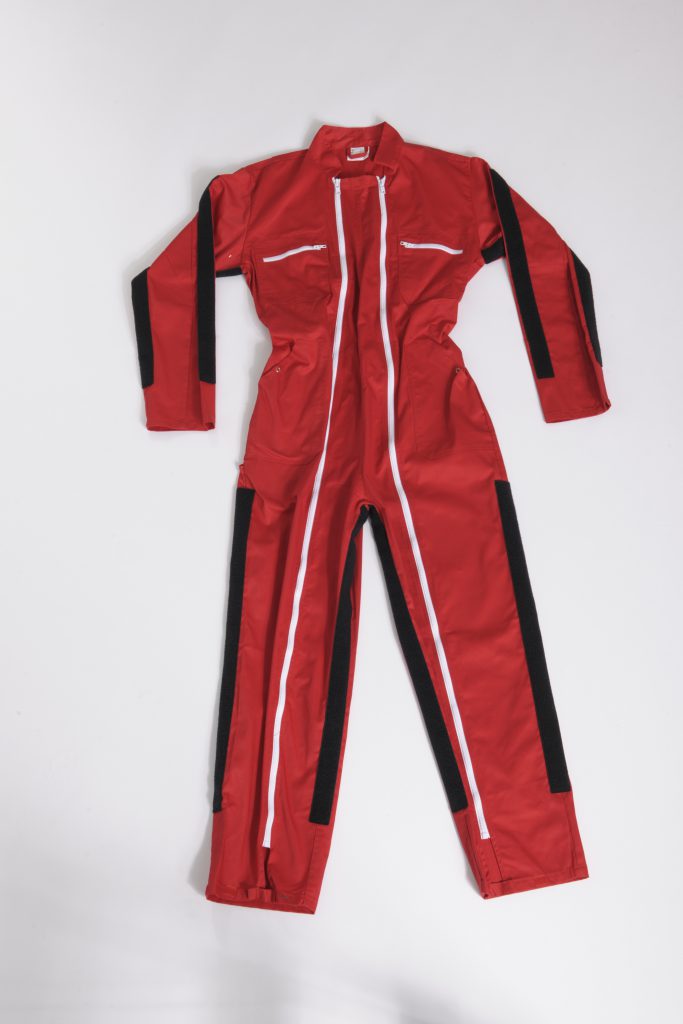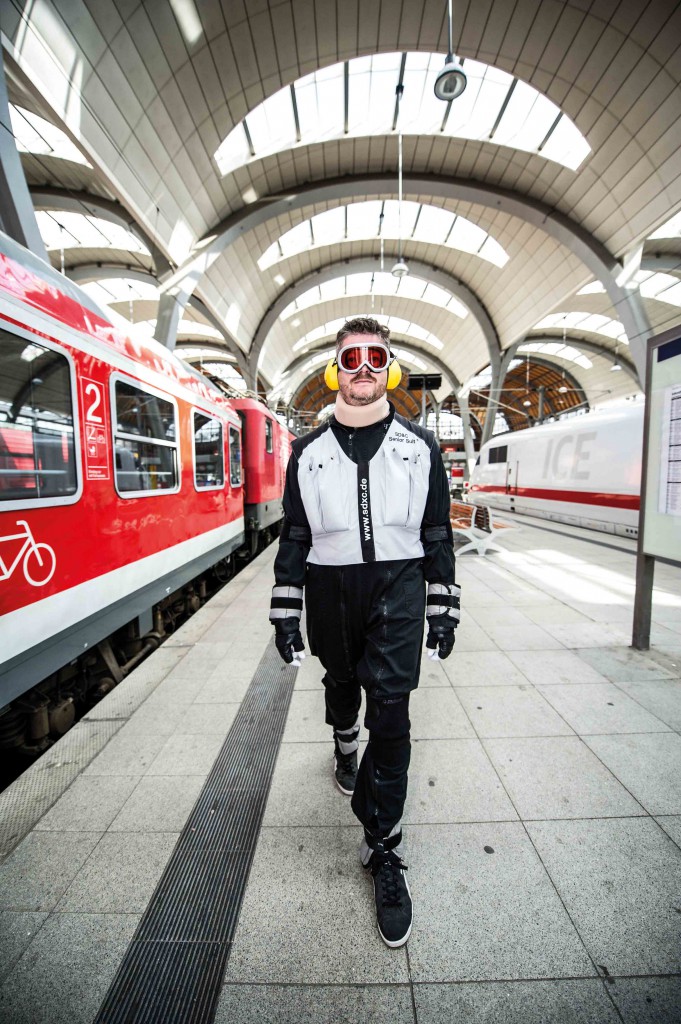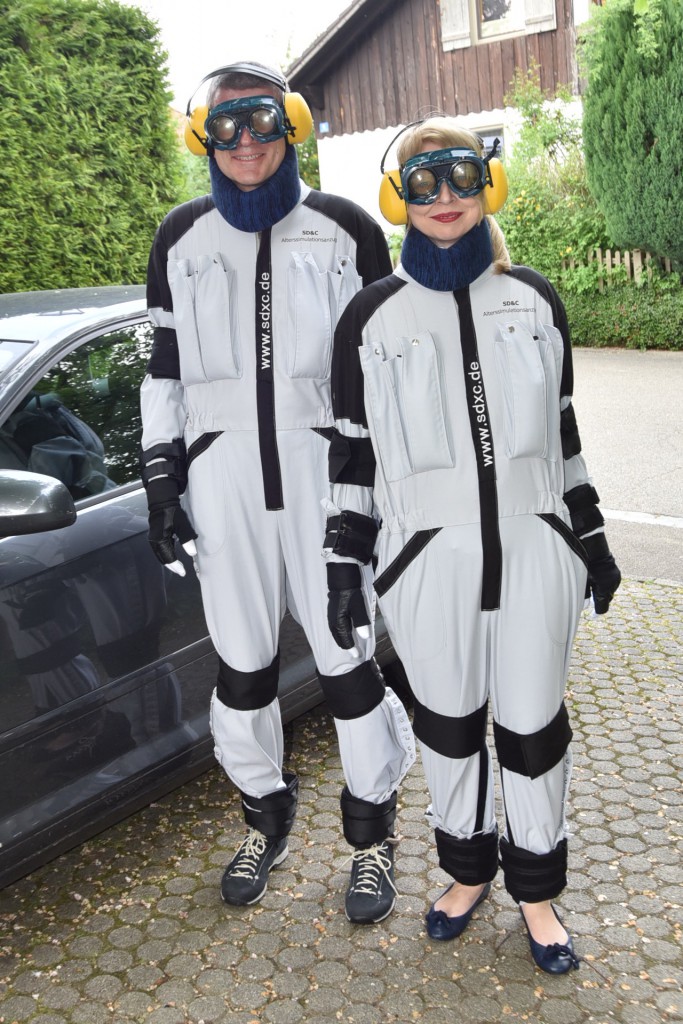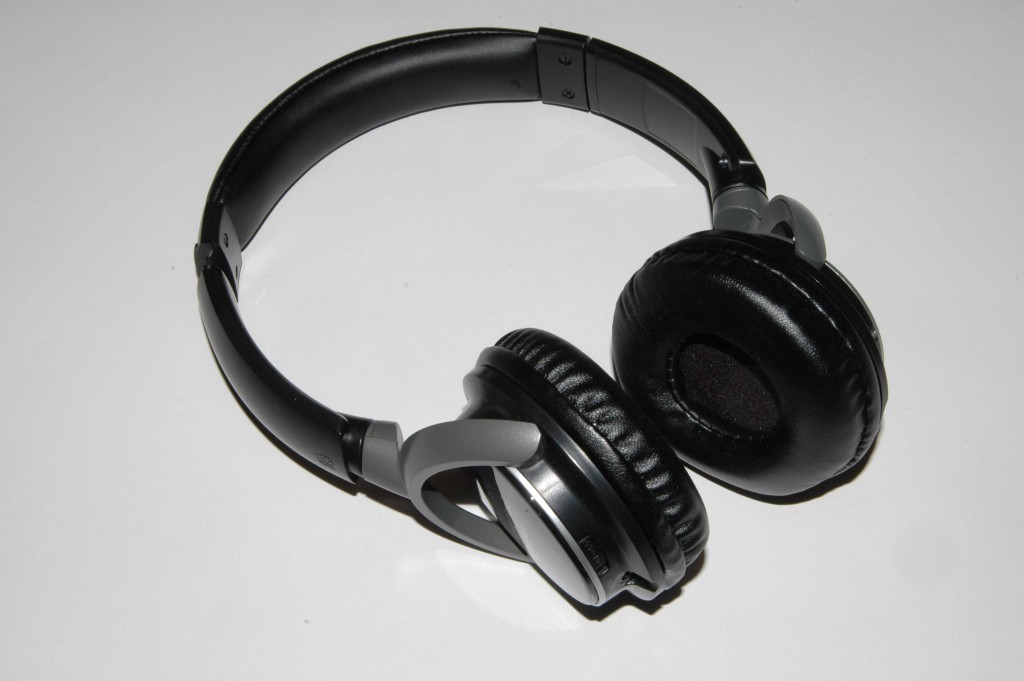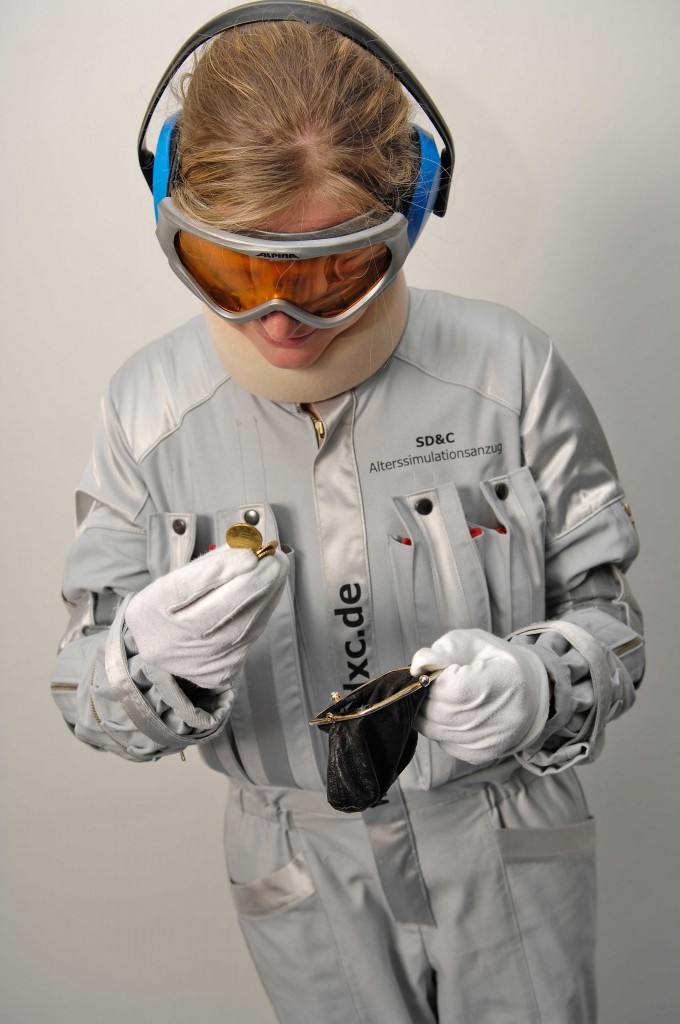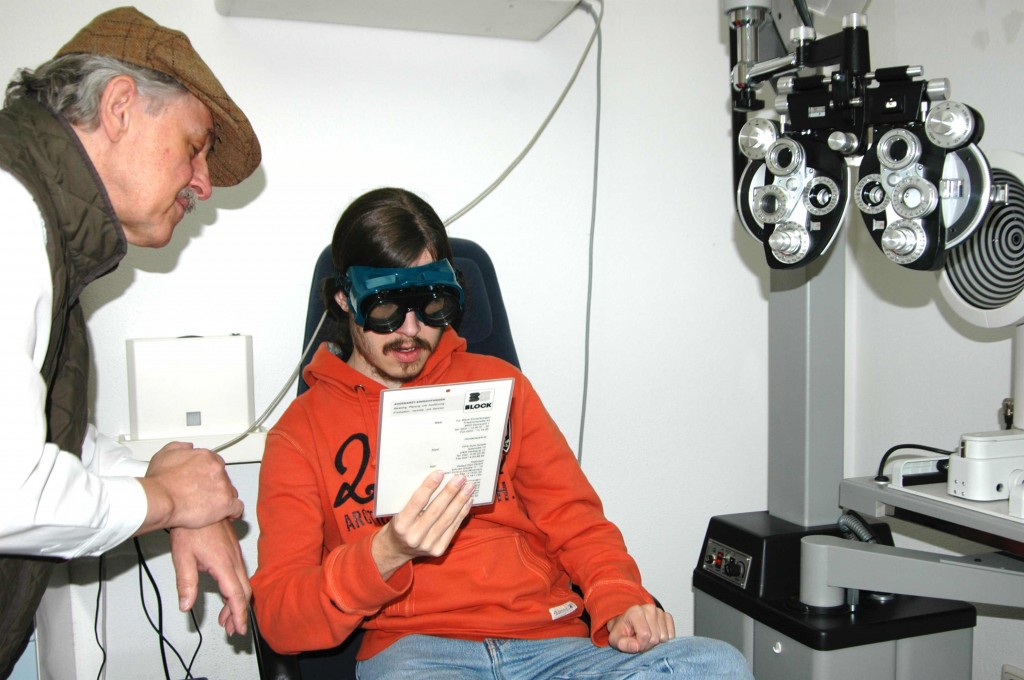Since 20 years now SD&C is offering age simulation to the public. While SD&C has not been the first to try such a simulation, SD&C can be said to be the first company to offer age simulation to the public. This has taken place in Munich in 2003 during an open street festival.
It all began when the founder Dr. Schoeffel started his own business, after having left Siemens with a first version of an age simulation suit in his package. Being a highly qualified specialist for ergonomics, his business concept for SD&C included offering ergonomics consulting with a special emphasis on the ever growing population of the elderly in Europe. Dr. Schoeffel has been heading the international standardization group with special focus on usability for the elderly (ISO 20282) and has headed the usability concepts for the elderly within the Siemens home appliances branch.
In many fields in the last 20 years, SD&C age simulation has contributed to usability improvements for the elderly. E.g. cars now offer camera systems to help the elderly drive backwards; hearing aids turned from ugly devices to precious little helpers able to directly take phone calls; packages have opening indicators (which also help the younger ones); and many countries use the ISO tests to ensure that public vending machines are good for the elderly as well.
Nevertheless, the request for age simulation has developed in its own directions, and after ergonomic consulting workshops, SD&C started to build and sell the requested age simulation suits, and soon they also could be rented in Germany and Austria.
Knowing the functional decrease ratios when ageing, SD&C soon began to invest into research on better realizing them in the simulation gadgets. While the first simulation suits were not for sale, several outstanding developments were realized (and patented) in the later simulation suits. And while others tried to take advantage of this as business opportunity, academic tests on the way proved that SD&C was leading in realism and design. Concentrating on the real biological aging process rather than simulating all sorts of geriatric phenomena, SD&C age simulation suits were named Senior Suits.
The SD&C Senior Suits have won a lot of friends in many fields. The medical community embraced age simulation especially, many doctors and nurses now become trained with the SD&C Senior Suits suits. Wherever research is conducted including aspects of the elderly, the SD&C Senior Suits can be found in many universities on this planet. Moreover the simulation suits are widely used by architects and township planners to ensure barrier free design.
20 years are a long time, and now a new generation takes over. Since the start of 2023, Rene Schoeffel, the son of the founder, has become the new CEO of SD&C. The founder of SD&C, now 71 of age, will still help – as long as the technology stays usable for him.


